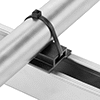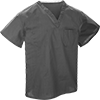Filter by
Thread Size
Material
Mount Type
Finish
Color
Bolt-Together Framing Component
Overall Height
Rail Height
Strut Channel Type
Shape
Strut Channel Framing Component
DFARS Specialty Metals
Building and Machinery Hardware
Measuring and Inspecting
Fabricating and Machining
Material Handling
Lighting
Communication
Containers, Storage, and Furniture
Power Transmission
Electrical
Fastening and Joining
Facility and Grounds Maintenance
Safety Equipment
Raw Materials
Fluid Handling
Heating, Ventilation, and Air Conditioning






































































































































































